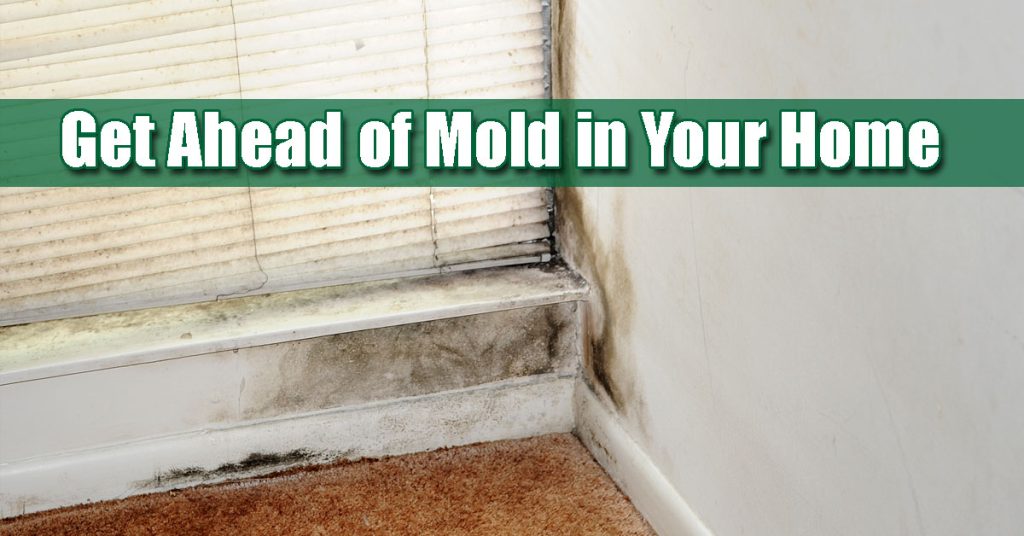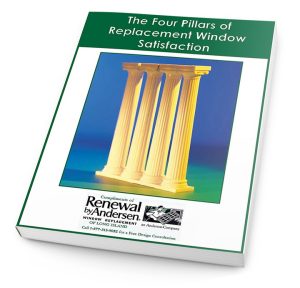

Thinking of updating your Long Island home with high-performance replacement windows before frigid temperatures descend upon us again? Shutting out cold air and moisture to stay comfortable in your home during the winter is something on everyone’s mind as the cold weather season on Long Island approaches. Winter weather can definitely be uncomfortable, but did you know that cold weather can also create the perfect environment for mold to take root and thrive indoors? This Renewal by Andersen of Long Island article will help our friends and neighbors explore ways to prevent – and treat – mold before it gets out of hand.
Mold is a fungi. And, like other spore-releasing fungi, it can spread in a number of ways – through the air, from a water source, and even by hitch-hiking a ride on the fur of the family pet out for an innocent walk. Mold is persistent and can thrive almost anywhere, as long as there is moisture and a food source. Organic material is everywhere in a home. Drywall, soil hosting your houseplants, and the fresh fruits and vegetables from the market are just three examples of organic material in almost every home.
Not every mold is toxic to humans, like the black mold you hear about on the news, but many people have allergic reactions to otherwise benign species that are allowed to grow unchecked in a home. People who have a compromised immune system, those with asthma and both very young and very old people may develop respiratory problems in a damp, musty, moldy environment. Mold that isn’t treated and controlled can eat away at your wallpaper, drywall and other porous surfaces, causing thousands of dollars of damage. While you cannot eliminate all mold, you can take steps to protect your family’s health and prevent damage to your home.
Controlling mold can be an ongoing process if you live in a home that isn’t sealed against the outdoor elements. Aging windows and doors often allow air and moisture to flow freely in and out of your home. Outdated heating and cooling appliances can increase the humidity in your home and, daily activities like showering and cooking, put moisture in the air.
We aren’t suggesting you stop bathing or cooking! And, we aren’t suggesting anyone would be healthy living in a hermetically sealed home that prevents adequate ventilation to flush out stale air and bring in fresh air. The key to preventing mold infestation is to control moisture, not eliminate it entirely. Modern replacement windows and patio doors offer a superior level of moisture control and give you total control over when and how much air flows through your house.
Here are a few ways you can reduce moisture levels in your home in addition to replacing aging windows.
Breaking the mold cycle is sometimes challenging, especially when you live in an older home, with poorly performing windows. Updating with high-performance windows that allow controlled ventilation and block air and moisture transfer gives homeowners an opportunity to get ahead of the mold, and create a more comfortable indoor environment. Without excessive condensation that can cause damage to walls, floors and window components every time it rains, snows or sleets, homeowners are positioned to prevent mold from spreading.
It is important to thoroughly clean and moldy areas on hard, non-porous surfaces as soon as you find them. Any area smaller than a three foot by three foot section can normally be cleaned with a mix of hydrogen peroxide and water, or a soapy solution. Remember to wear a mask and protective eye wear during the clean up. If you find multiple areas of infestation, consult your local health department or a professional remediation expert.
We want to offer our help, too. Our Renewal by Andersen of Long Island team can help you explore replacement window solutions to restore your home to peak performance. If you think your home windows are contributing to a moldy indoor environment, fill in the short form on this page or call us at (866) 609-5033 to schedule a private home consultation with a replacement window expert.

Learn Everything You Need to Know BEFORE Buying Replacement Windows